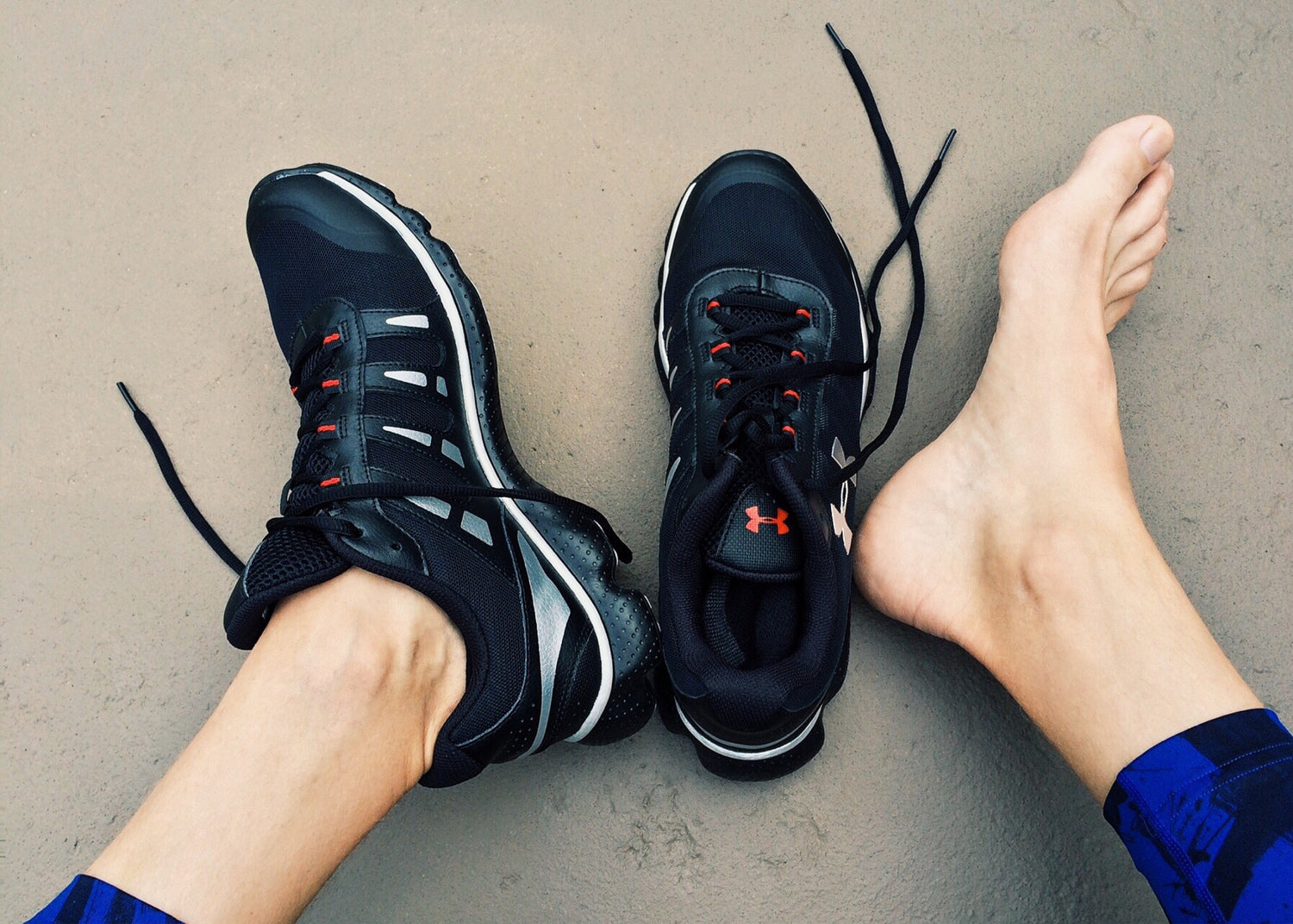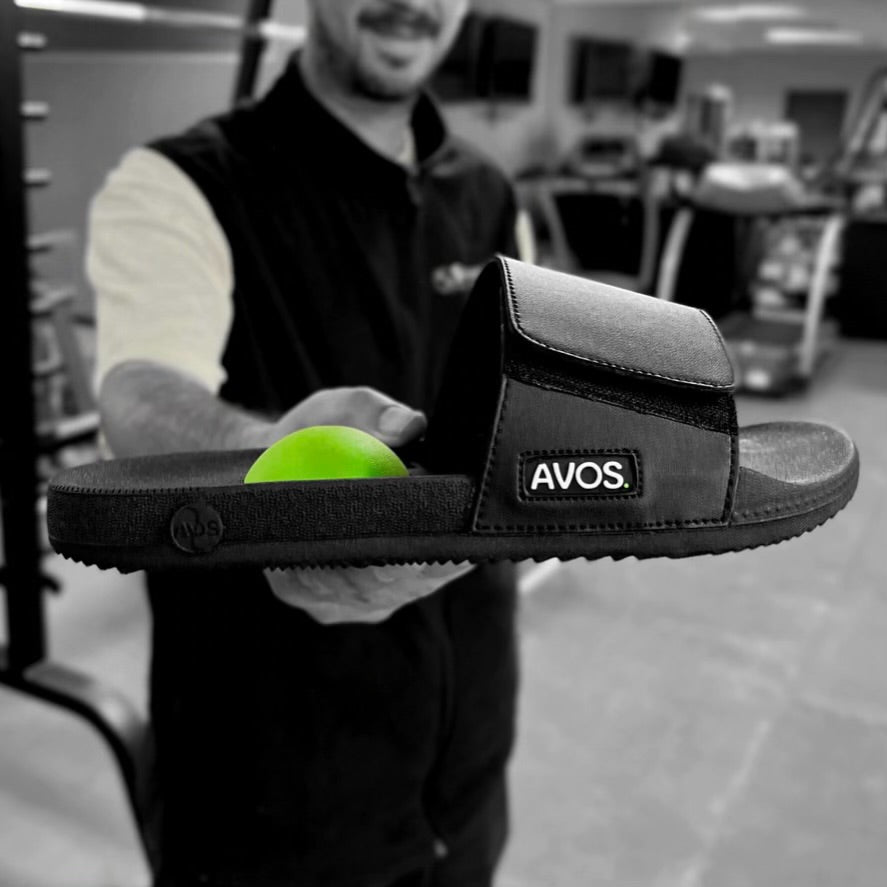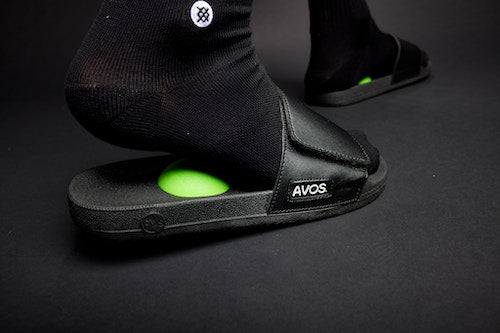If you consider yourself to be an active person, it’s likely that you’ve experienced some sort of issue or pain regarding your feet. Maybe after years of playing a sport that requires you to wear special cleats, you’ve started to notice pain or soreness in your arches. Or perhaps your hobbies have required a lot out of your feet and you’re starting to notice some pain points.
Whatever the reason may be, you’ve come to the right place to figure out what is going on with your feet and how you can deal with the issue straight away.
First, let’s start with addressing what the pain exactly is.
You might have heard the term “Plantar Fasciitis” used before if you’ve done some research on the causes of your foot pain.
Plantar fasciitis is a technical term for the common and often painful foot condition characterized by inflammation and irritation of the plantar fascia. What’s the plantar fascia you ask? It’s the thick band of tissue that runs from the heel of your foot to the toes of your feet.
You can think of the plantar fascia as the arch of your foot. As clearly essential part of our movement, it’s important to take good care of your plantar fascia, and addressing plantar fasciitis head on is our goal here.
Now, let’s start with some of the most common causes for foot pain:
5 Common Causes for Foot Pain
1. Overuse
It’s likely that most of your pain is simply due to excessive or repetitive strain on the plantar fascia.
Excessive standing, walking, running, or jumping can cause inflammation and pain in the plantar fascia area and may be the main cause of your foot pain.
This isn’t to say that your daily activities are unhealthy or unsustainable. It’s only to suggest that you might be in need of some extra support for your plantar fascia, and there are plenty of products out on the market that can provide you with that support.
2. Improper Footwear
Another common issue can be the style of footwear you use for your daily activities. If you’re doing a lot of the actions mentioned above in #1, it’s even more important that you have the extra support needed to account for the stress on your feet.
Lacking the proper arch support, cushioning, or shock absorption can contribute to the development of plantar fasciitis. High-heels, flip-flops, and flat-footed are all examples of footwear that can increase stress on our beloved plantar fascias, making it likely for you to develop this uncomfortable pain in the long-term.
3. Foot Structure
This one might be a hard pill to swallow for some, but sometimes foot pain is induced just by the way our foot is structured. Individuals born with high arches or flat feet, or just have an abnormal walking pattern can have increased pain in their feet due to more stress being placed on the plantar fascia.
This isn’t anyone’s fault to begin with, and it's unfortunate that some people have to face this penalty, but it’s nice to know that there are exercises and products out in the world that can work to eliminate this pain.
4. Gaining Weight and Aging
As you get older, your plantar fascia is going to lose a lot of the elasticity and effectiveness it had when you were younger and able to move quicker without getting as tired and worn out.
This is the case with most muscles and bodily tissue. However, it’s important to be mindful of the body and how aging can affect our movement and output.
The same goes for your weight. If you are putting on a significant amount of weight, you may not realize that this could be a contributing factor to your foot pain. Excess weight can increase the load placed on the fascia, making it more susceptible to pain and inflammation.
5. Tight Calf Muscles and/or Shortened Achilles Tendon
This is a more technical cause for foot pain but it might be exactly what you’re dealing with. Tight calf muscles and a shortened achilles tendon can limit ankle flexibility, which in turn can place extra stress on the plantar fascia.
A shortened achilles tendon can pull on the heel bone, which can increase the tension placed on the plantar fascia, causing more pain than would otherwise be expected.
With a tightened calf muscle, the pain comes from having a limited range of upward ankle motion, or ankle dorsiflexion. Reduced dorsiflexion can increase the tension on the achilles tendon, as well as the plantar fascia, highlighting another possible cause for your foot pain.
That being said, it’s important to note that calf muscle tightness and a shortened achilles tendon can be both a cause and a result of plantar fasciitis.
Foot Pain Remedies
Overall, there can be an array of different reasons for plantar fasciitis. The beauty of living in this day and age is that we have modern practices and products that can help reduce, and maybe even eliminate, the foot pain that has taken hold of your daily life.
We’ll now list some of the best remedies for plantar fasciitis and how you can take advantage of them:
Ice
We’re sure you’re familiar with this time-tested method for pain and recovery, but it holds true to most injuries, including prolonged foot pain.
For mild cases of foot pain, resting your feet and applying ice helps reduce inflammation and relieve most of the discomfort.
For more extreme cases, there are more in-depth remedies and solutions.
Tennis Ball Massage
Oftentimes, a lot of the pain associated with the plantar fascia can be relieved by rolling a tennis ball under your foot to massage the inflamed area.
The ball rolling technique stimulates blood flow and circulation in your plantar tissue and relaxes those contracted muscles fibers.
This alleviates the tension built up in and around the plantar fascia and can give some serious pain relief to those experiencing harsh foot pain.
Proper Footwear
Investing in supportive shoes with strong arch support and cushioning can be a game changer for foot pain. Arch support is one of the most effective solutions for a plantar fascia that is receiving a lot of strain.
We all love our stylish shoes on a night out, but having a balance between style and proper support can do wonders to manage your foot pain.
Recovery Sandals
One of the best ways you can relieve foot pain is by using recovery sandals. Also known as therapeutic sandals, recovery slides, or tennis ball sandals, these can be a significant remedy for your foot pain.
How do recovery sandals work?
Recovery sandals hold their value in their functionality. Constructed with cushioned insoles and supportive footbeds, recovery sandals help to absorb shock and reduce the impact on your feet when you walk.
Oftentimes these sandals are used at home after a long work day or even casually when out and about.
Ideally, recovery sandals should have a midsole curve to provide adequate arch support. This feature aims to reduce the workload on the foot while walking.
Deep heel cups also help to keep the heel of your foot in place, reducing the workload on other parts of your foot.
All of these features are important when considering how best to treat your plantar fasciitis. One of the best ways to tackle the issue is by using a combination of all of the solutions we’ve just talked about.
AVOS Therapy
To make the most of recovery sandals, it's important to seek out options that incorporate various solutions for foot pain.
This is where AVOS Therapy enters the picture and gives you an escape from the discomfort.
Avos Therapy Recovery Sandals are much like other name brand slides in that they provide standard support features like arch support and heel cups that you would expect from a high-quality supportive footwear.
But, where AVOS slides differentiate themselves from other recovery sandals is in their semi-soft inserts that provide plantar fascia support and massage-like therapy.

The inserts themselves can be interchanged allowing you to select larger or smaller massage balls based on the preference for a deeper or milder massage effect.
By Integrating this tennis ball massage feature into an already supportive sandal, you’re reaping multiple benefits for foot pain relief from a pair of slides that emulate your everyday household slippers.
This is why we highly encourage recovery sandals for individuals who’ve experienced foot pain for a long time, or for someone who is just starting to notice foot pain.
Take the proactive step in alleviating your plantar fasciitis, as this condition can become a serious discomfort in your later years.
Click the link here to learn more about AVOS Therapy Recovery slides and how they can be the cure to your foot pain.




Leave a comment
This site is protected by hCaptcha and the hCaptcha Privacy Policy and Terms of Service apply.